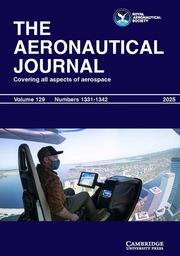No CrossRef data available.
Article contents
System’s resilience through a data-learning-guided maintenance planner
Published online by Cambridge University Press: 13 June 2025
Abstract
Maintaining high-complexity aircraft requires resilient and data-driven maintenance planning. This article presents the efficient task allocation and packing problem solver (ETTAPS), a novel framework that integrates predictive analytics and optimisation models to generate adaptive maintenance schedules. ETTAPS employs a trial-and-error approach to optimise maintenance intervals, leveraging a branch-and-cut solver combined with first-fit decreasing (FFD) task grouping to minimise costs and enhance aircraft availability. Additionally, a random forest model, retrained using a rolling 24-month data window, continuously refines predictions, leading to progressive cost reductions and improved system reliability over multiple maintenance cycles. Our results demonstrate that ETTAPS significantly reduces maintenance costs and increases aircraft availability by efficiently grouping tasks and incorporating real-world constraints, such as mechanic skill levels, task dependencies and resource limitations. The framework addresses key gaps in MSG-3 and certification analysis, improving task scheduling efficiency and ensuring long-term operational resilience. Furthermore, ETTAPS lays the groundwork for integration with digital twins, real-time anomaly detection and flight planning systems, supporting a more intelligent and proactive approach to aircraft maintenance. This research advances resilience and sustainable aviation maintenance planning by optimising costs, reducing downtime and proactively adapting to operational demands. By aligning with Industry 4.0 and aviation sustainability goals for 2050, ETTAPS contributes to the next generation of intelligent maintenance systems.
Keywords
Information
- Type
- Research Article
- Information
- Copyright
- © The Author(s), 2025. Published by Cambridge University Press on behalf of Royal Aeronautical Society


